Fujiko Nakaya has been creating sculptures using fog for half a century. Now, she has pushed her skills across new frontiers with ‘Fog x FLO’, five installations dotted through Boston’s Emerald Necklace – a string of parks and connecting paths encircling the city centre. It was designed in the 1880s by Frederick Law Olmsted, a man she has said she hugely admires. What he achieved was an ingenious cleansing, engineering and repurposing of putrid land to the west of the expanding city, transforming it into landscaped public spaces christened the Emerald Necklace. Olmsted, who created grand parks across the United States – New York’s Central Park is one – considered it his crowning achievement.
Nakaya’s additions emphasise elements of this landscape. Every half hour each day, from early morning till dusk, her white sculptures fizz out of precision-placed pressurised jets for a few minutes. They swirl, billow, drift with the breeze, catch the light, fold around trees, slide into lakes. Then they gently fade away. By the next time the jets fizz into action, subtle changes in humidity, wind and heat create a different moving sculpture. They are joyful and mesmerising. Commuters get off their bikes to watch, nearby soccer matches are suspended as both teams hurry to the spot, people gather and stand entranced or run into the ethereal vapour.
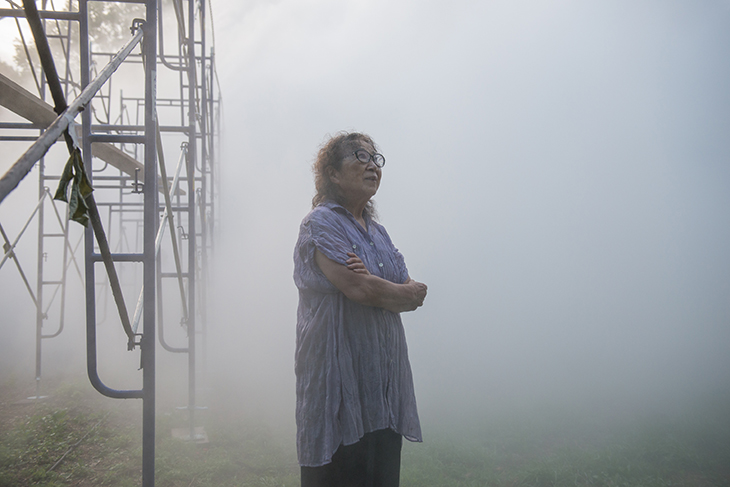
Fujiko Nakaya testing one of her fog sculptures, Fog x Ruins. Photo: Melissa Ostrow
Born in Japan in 1933, the petite octogenarian artist has boundless energy. For the fog sculpture in Arnold Arboretum, which she calls Fog x Hill, Nakaya wanted to celebrate the spot where locals come to enjoy sunset. She clambered up, down and around the hillside, asked questions about prevailing winds, studied meteorological data going back decades, then chose her site. The arboretum staff gave two trees protective wrapping, slung rows of jets between them and checked they worked. Then Nakaya worked her magic, carefully positioning each of several hundred jets so their sprays would crash into one another and send up clouds of fog that would then tumble down the hillside among the exotic trees.
High-pressurised water is forced through a tiny hole in the nozzle of a stainless-steel jet, splitting the water droplets to create artificial fog. Perhaps Nakaya was inspired by her father, a climate scientist who is credited with making the first artificial snowflakes; certainly, her participation with the Experiments in Art and Technology (E.A.T.) collective led to her representing the group at Expo ’70 in Osaka where she created the world’s first atmospheric fog sculpture for the Pepsi Pavilion. She has since presented her sculptures around the world, including (in collaboration with Bill Viola) at the Festival of Light, Sound and Fog in Tochigi in 1980, and at the Arnolfini Gallery in Bristol in 2015.
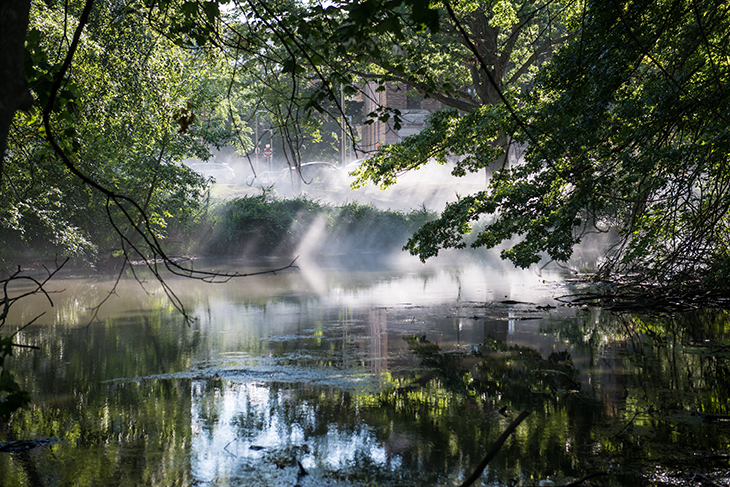
Fog x Canopy (2018), Fujiko Nakaya. Installation view at Clemente Field, Back Bay Fens, Boston. Photo: Melissa Ostrow
Nakaya dubs her multi-piece Boston work ‘stepping stones’, each one responding to its setting. For Fog x Canopy, people standing beneath the jets experience the fog developing above them, falling down over them, making them disappear – perhaps feeling lost for a few moments until it rolls off into the nearby river. For Fog x Island, nearly 300 nozzles set on an island at ground level spurt out their fog across the water where it meanders through the pondside trees, slowly rising and gently dissipating near a favourite picnic spot. For Fog x Beach, Nakaya chose to make her fog roll down an oval-shaped glacial valley created by the last ice age. She wants people experiencing each sculpture to re-connect with nature, to respect it, to gain a new sense of time and of life. Finally, there is Fog x Ruins, a dome of nozzles that runs continuously rather than just on the half hour. The site is a burnt-out building where Olmsted used local Roxbury puddingstone inset in a raw mound of ancient stone.
There have been other, earlier responses to Olmsted’s Necklace. Soon after it was completed, Isabella Stewart Gardner bought land beside it on the Fenway thoroughfare. Here she built her Venetian-style museum which opened in 1903 with a dinner of champagne and doughnuts and music by the Boston Symphony Orchestra. The Museum of Fine Arts relocated nearby six years later, moving its 110,000 objects from Copley Square using two horse-drawn wagons.
Nakaya’s installations inside the Necklace have been hugely popular, doubling the numbers of visitors to the inner city’s precious green lungs. The Emerald Necklace Conservancy, which organised the show to celebrate its 20th anniversary, hopes one of them might become a permanent addition and fizz into life for years to come.
‘Fog x FLO: Fujiko Nakaya on the Emerald Necklace’ is at various locations in Boston until 31 October.
This article was corrected on 8 October 2018. A previous version stated that Frederick Law Olmsted came from Boston. Olmsted was born in Hartford, Connecticut.
Unlimited access from just $16 every 3 months
Subscribe to get unlimited and exclusive access to the top art stories, interviews and exhibition reviews.

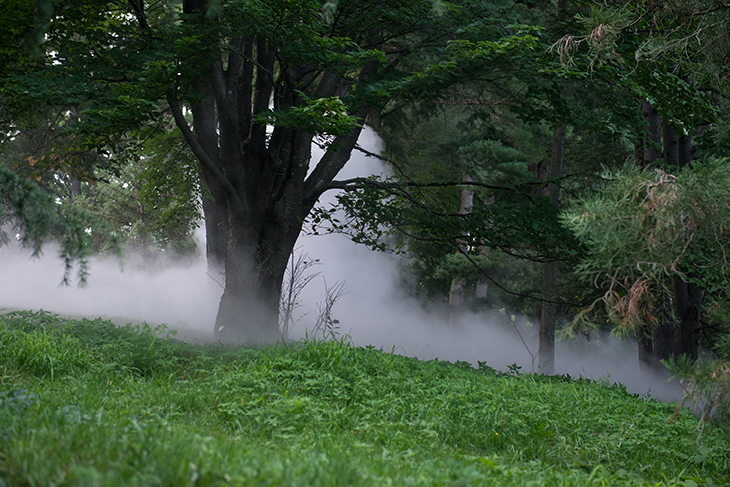
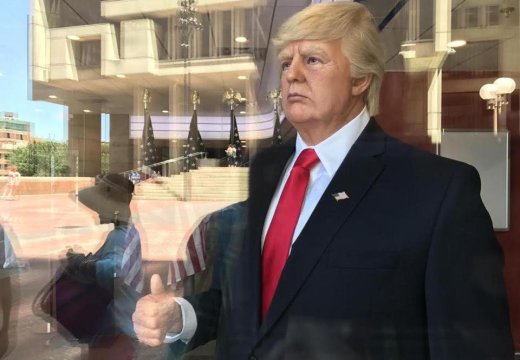
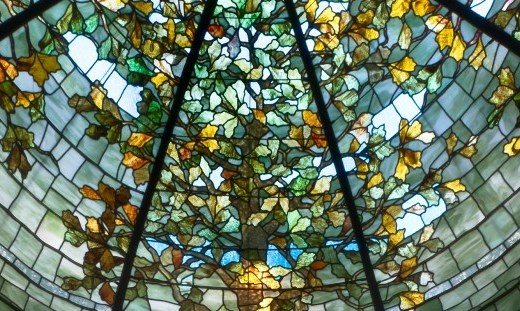
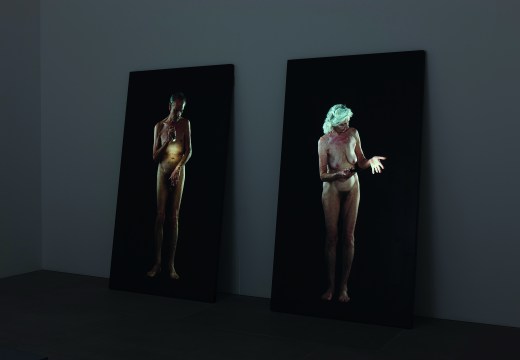









![Masterpiece [Re]discovery 2022. Photo: Ben Fisher Photography, courtesy of Masterpiece London](http://www.apollo-magazine.com/wp-content/uploads/2022/07/MPL2022_4263.jpg)
It’s time for the government of London to return to its rightful home